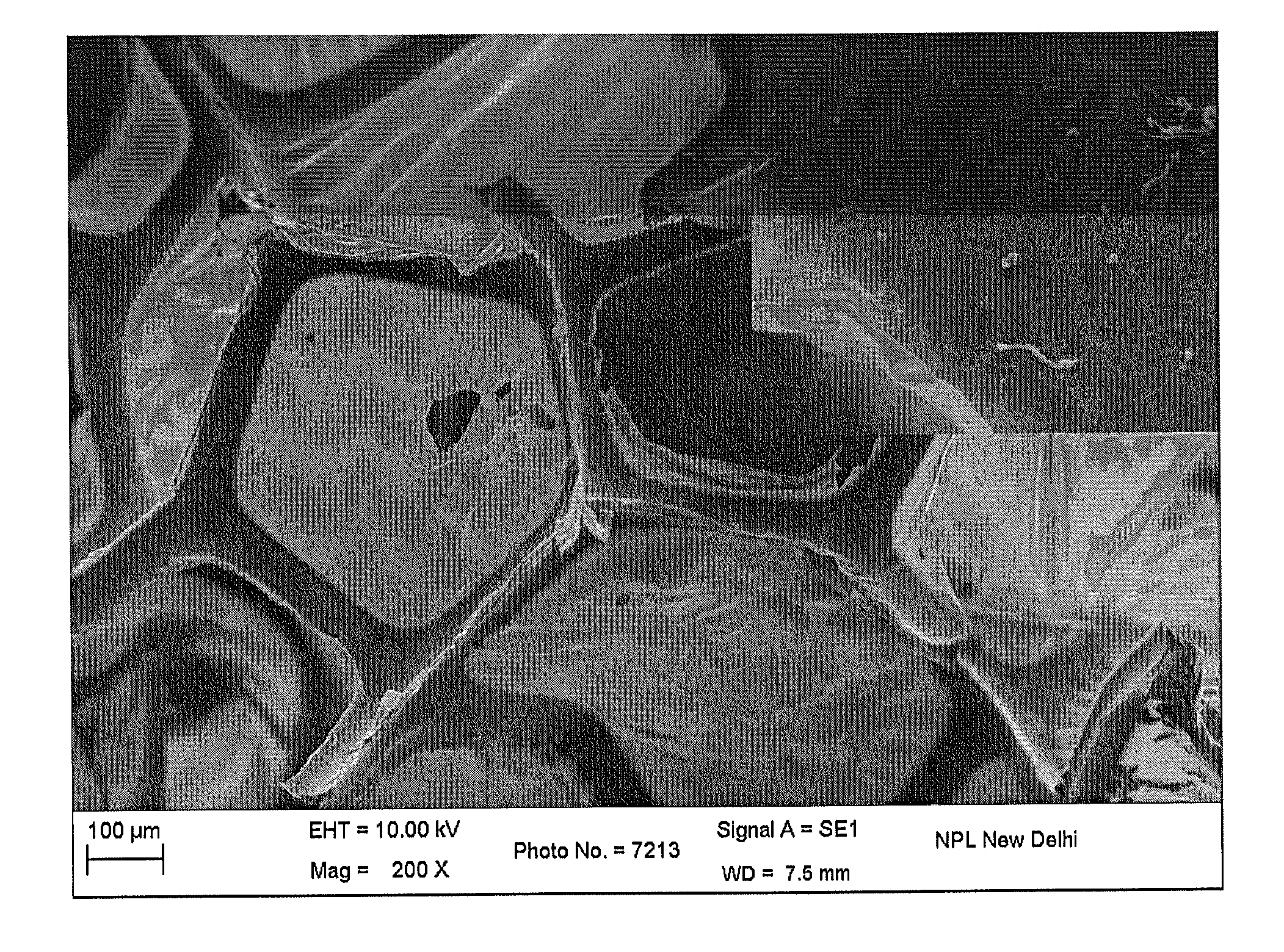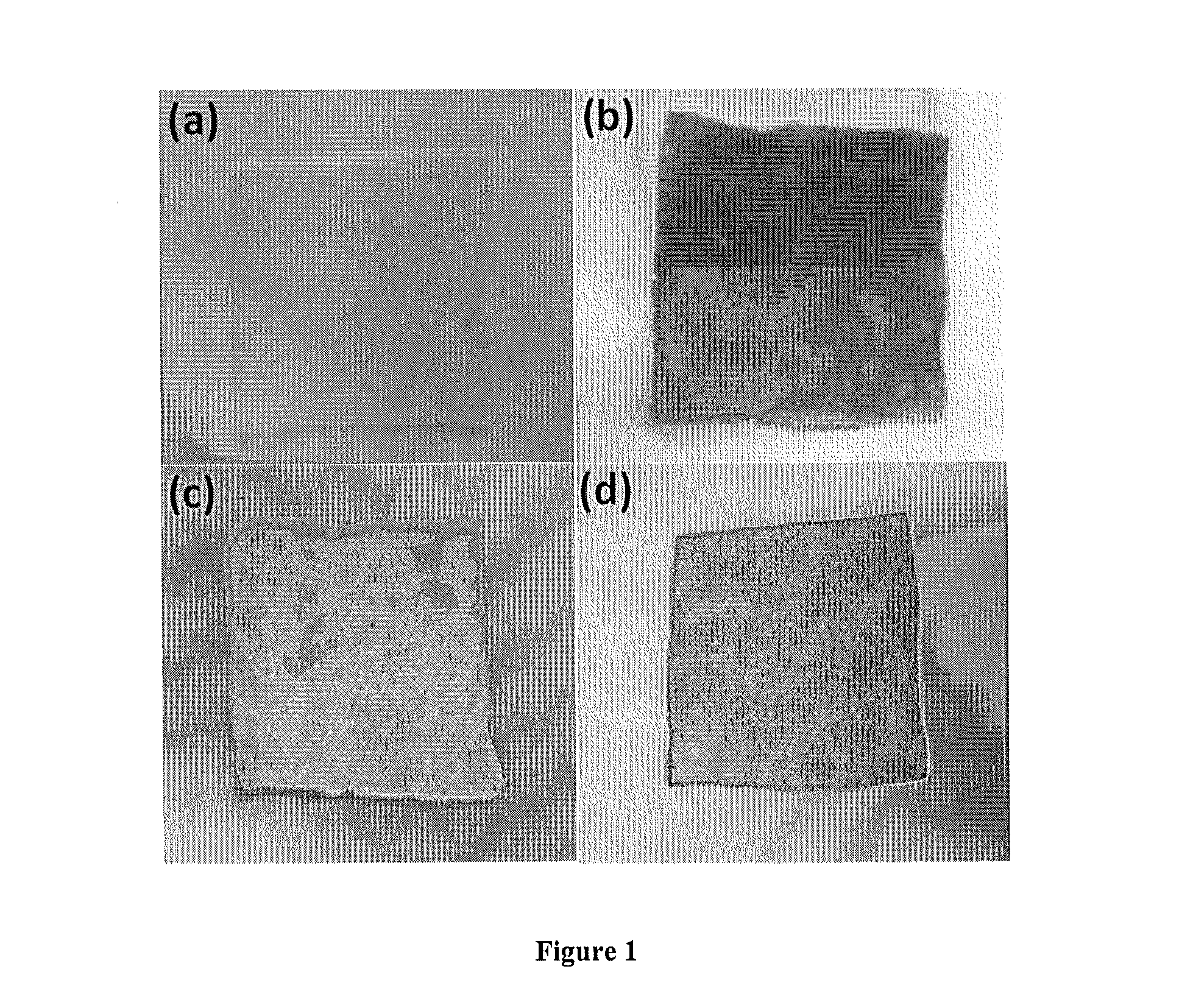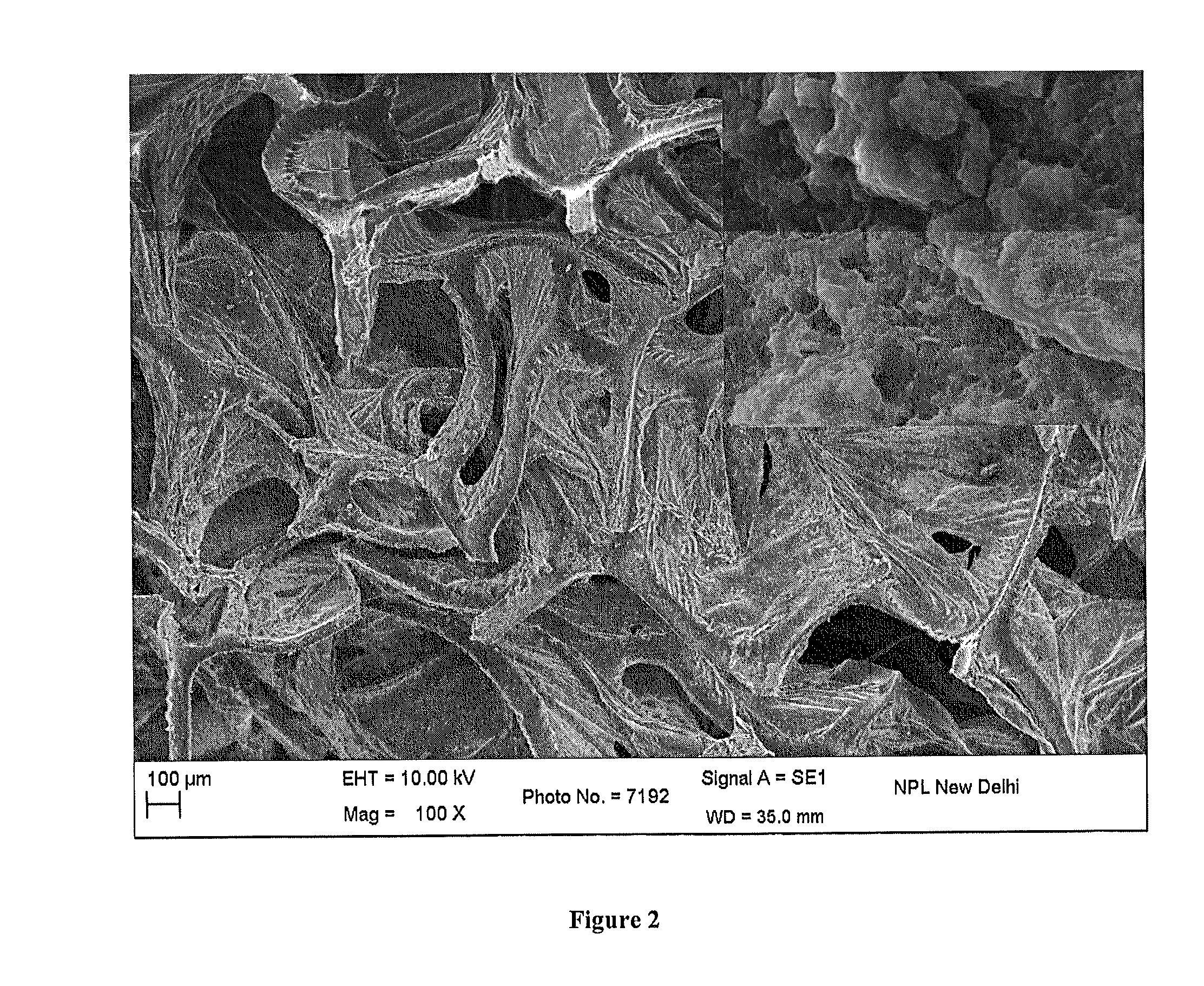Electrostatic dissipative foams and process for the preparation thereof
a technology of electrostatic dissipative foam and electrostatic dissipative foam, which is applied in the field of electrostatic nanofillers, can solve the problems of static charge clinging to thin films and light fabrics, igniting flammable gases, and electrical shock to staff working on shop floors, and achieving good resilience, easy to bend, roll or fold, and the effect of preventing contact electrification
- Summary
- Abstract
- Description
- Claims
- Application Information
AI Technical Summary
Benefits of technology
Problems solved by technology
Method used
Image
Examples
example 1 to 5
Preparation of Polyaniline Coated Foam
[0059]Polyaniline (PANT) decorated foam is prepared by wet chemical route using chloroform dispersion of PANI nanorods to impregnate foamed substrate followed by evaporation of chloroform leaving behind electrically conducting network of PANI nanorods over foam's surface. PANI nanorods are prepared by low temperature (−5° C.) chemical oxidative polymerization (via emulsion route) of aniline (AN) monomer in the presence of surfactant dopant i.e. dodecyl benzene sulfonic acid (DBSA).
[0060]In a typical reaction, aqueous emulsion of 0.3 M DBSA is prepared by high speed homogenization (via MICRA, D8 rotating at >10000 rpm) for 30 min, followed by addition of 0.1 mol AN (aniline) and homogenization is continued for another 30 min. Thereafter, the reaction mixture is transferred to a glass reactor, cooled to (−) 5° C. under continuous stirring and is subsequently polymerized by dropwise addition of 150 ml aqueous solution of 0.1 mol ammonium peroxydisu...
example 2
[0062]PANI nanorods decorated foam (˜0.031 volume % PANI) is prepared by wet mixing method as in example 1 by taking dilution ratio of 1:20. The coated foam display flexibility, low density and static charge dissipation capability as mentioned in Table 1. The qualification of static dissipative criteria suggests its use for making static charge dissipative (low triboelectric charging) electronic packaging / encasing material.
example 3
[0063]PANI nanorods decorated foam (˜0.055 volume % PANI) is prepared by wet mixing method as in example 1 by taking dilution ratio of 1:10. The coated foam display flexibility, low density and static charge dissipation capability as mentioned in Table 1.
PUM
| Property | Measurement | Unit |
|---|---|---|
| surface resistivity | aaaaa | aaaaa |
| porosity | aaaaa | aaaaa |
| density | aaaaa | aaaaa |
Abstract
Description
Claims
Application Information
 Login to View More
Login to View More - R&D
- Intellectual Property
- Life Sciences
- Materials
- Tech Scout
- Unparalleled Data Quality
- Higher Quality Content
- 60% Fewer Hallucinations
Browse by: Latest US Patents, China's latest patents, Technical Efficacy Thesaurus, Application Domain, Technology Topic, Popular Technical Reports.
© 2025 PatSnap. All rights reserved.Legal|Privacy policy|Modern Slavery Act Transparency Statement|Sitemap|About US| Contact US: help@patsnap.com



